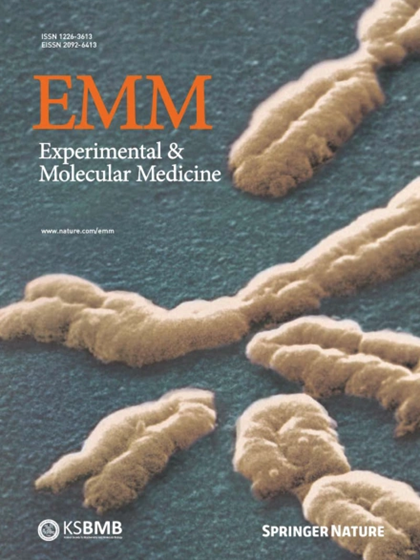Activin E is a new guardian protecting against hepatic steatosis via inhibiting lipolysis in white adipose tissue
IF 9.5
2区 医学
Q1 BIOCHEMISTRY & MOLECULAR BIOLOGY
引用次数: 0
Abstract
Hepatic endoplasmic reticulum (ER) stress is implicated in the development of steatosis and its progression to nonalcoholic steatohepatitis (NASH). The ER in the liver can sustain metabolic function by activating defense mechanisms that delay or prevent the progression of nonalcoholic fatty liver disease (NAFLD). However, the precise mechanisms by which the ER stress response protects against NAFLD remain largely unknown. Recently, activin E has been linked to metabolic diseases such as insulin resistance and NAFLD. However, the physiological conditions and regulatory mechanisms driving hepatic Inhbe expression (which encodes activin E) as well as the metabolic role of activin E in NAFLD require further investigation. Here we found that hepatic Inhbe expression increased under prolonged fasting and ER stress conditions, which was mediated by ATF4, as determined by promoter analysis in a mouse model. Consistently, a positive correlation between INHBE and ATF4 expression levels in relation to NAFLD status was confirmed using public human NAFLD datasets. To investigate the role of activin E in hepatic steatosis, we assessed the fluxes of the lipid metabolism in an Inhbe-knockout mouse model. These mice displayed a lean phenotype but developed severe hepatic steatosis under a high-fat diet. The deficiency of Inhbe resulted in increased lipolysis in adipose tissue, leading to increased fatty acid influx into the liver. Conversely, hepatic overexpression of Inhbe ameliorated hepatic steatosis by suppressing lipolysis in adipose tissue through ALK7–Smad signaling. In conclusion, activin E serves as a regulatory hepatokine that prevents fatty acid influx into the liver, thereby protecting against NAFLD. Hepatic endoplasmic reticulum (ER) stress is associated with nonalcoholic fatty liver disease (NAFLD). Although it is known that the liver’s ER can activate defense mechanisms to slow NAFLD progression, the specific protective processes remain unclear. Recent studies have identified activin E, encoded by the Inhbe gene, as being linked to metabolic conditions such as insulin resistance and NAFLD. This research demonstrates that hepatic Inhbe expression increases during ER stress, a process regulated by ATF4. Loss of Inhbe led to severe hepatic steatosis due to enhanced lipolysis in adipose tissue. By contrast, hepatic overexpression of Inhbe alleviated hepatic steatosis by suppressing adipose tissue lipolysis through ALK7–Smad signaling. These findings suggest that activin E functions as a regulatory hepatokine, protecting against NAFLD by preventing excessive fatty acid influx into the liver through the inhibition of adipose lipolysis. This summary was initially drafted using artificial intelligence, then revised and fact-checked by the author.

激活素E是一种新的通过抑制白色脂肪组织的脂肪分解来防止肝脏脂肪变性的保护者。
肝内质网(ER)应激与脂肪变性及其发展为非酒精性脂肪性肝炎(NASH)有关。肝脏中的内质网可以通过激活防御机制来维持代谢功能,延缓或预防非酒精性脂肪性肝病(NAFLD)的进展。然而,内质网应激反应保护NAFLD的确切机制在很大程度上仍然未知。最近,激活素E与胰岛素抵抗和NAFLD等代谢性疾病有关。然而,驱动肝脏Inhbe表达(编码激活素E)的生理条件和调节机制以及激活素E在NAFLD中的代谢作用需要进一步研究。在小鼠模型中,我们通过启动子分析发现,在长时间禁食和内质网应激条件下,肝脏Inhbe表达增加,这是由ATF4介导的。同样,使用公开的人类NAFLD数据集证实了INHBE和ATF4表达水平与NAFLD状态之间的正相关。为了研究激活素E在肝脂肪变性中的作用,我们评估了inhbe基因敲除小鼠模型的脂质代谢通量。这些小鼠表现出瘦表型,但在高脂肪饮食下发展为严重的肝脏脂肪变性。Inhbe的缺乏导致脂肪组织的脂肪分解增加,导致更多的脂肪酸流入肝脏。相反,肝脏过度表达Inhbe通过ALK7-Smad信号抑制脂肪组织中的脂肪分解,从而改善肝脏脂肪变性。总之,激活素E作为一种调节性肝因子,可防止脂肪酸流入肝脏,从而预防NAFLD。
本文章由计算机程序翻译,如有差异,请以英文原文为准。
求助全文
约1分钟内获得全文
求助全文
来源期刊

Experimental and Molecular Medicine
医学-生化与分子生物学
CiteScore
19.50
自引率
0.80%
发文量
166
审稿时长
3 months
期刊介绍:
Experimental & Molecular Medicine (EMM) stands as Korea's pioneering biochemistry journal, established in 1964 and rejuvenated in 1996 as an Open Access, fully peer-reviewed international journal. Dedicated to advancing translational research and showcasing recent breakthroughs in the biomedical realm, EMM invites submissions encompassing genetic, molecular, and cellular studies of human physiology and diseases. Emphasizing the correlation between experimental and translational research and enhanced clinical benefits, the journal actively encourages contributions employing specific molecular tools. Welcoming studies that bridge basic discoveries with clinical relevance, alongside articles demonstrating clear in vivo significance and novelty, Experimental & Molecular Medicine proudly serves as an open-access, online-only repository of cutting-edge medical research.
 求助内容:
求助内容: 应助结果提醒方式:
应助结果提醒方式:


